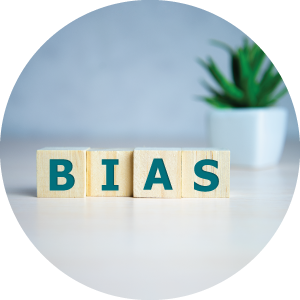Learning Objectives
By the end of this topic, the student should be able to:
- Identify the ways in which power and othering operate in the health and social service encounter.
- Describe the notion of White privilege.
- Identify ways to minimize power imbalance and prevent harm in the encounter between health and social service provider and clients.
Key Concepts
- Addressing unequal power dynamics in the provider-client relationship and ensuring respectful, nonjudgmental engagement are key elements of enacting cultural safety and cultural humility to support a person’s experience of safety in substance use programs.
- Othering is a process of people identifying those thought to be different from themselves or the mainstream, which can reinforce and reproduce positions of domination and subordination.
- White privilege is largely unexamined; the intersections of oppression (e.g., gender identity, poverty, ableism) create more or less disadvantage dependent on the circumstance; however, White privilege remains an important point of examination.
- The goal of trauma- and violence-informed care (TVIC) is to minimize harm to the people served—whether or not their experiences of violence is known; thus TVIC is an important component to ensuring all people are treated respectfully and in a nonjudgmental manner to prevent re-traumatization.
- The four basic principles of TVIC are as follows:
- Understand trauma and violence and their impacts on peoples' lives and behaviours.
- Create emotionally and physically safe environments for both clients and service providers.
- Foster opportunities for choice, collaboration, and connection.
- Provide strengths-based and capacity-building approaches to support client coping and resilience.
Unequal Power Relations
Within health services, there exists power imbalances in provider-client relationships. This includes the significant power that health and social service providers have:
- about decisions to grant access to resources and
- over people receiving or wanting to access services.

The literature is clear: some health and social service providers continue to contribute to the marginalization of people with mental health issues and/or those who use drugs in the following ways.
- Health and social service providers and their knowledge are considered more valuable than people requiring care or service.
- Health and social service providers are less likely to take as valid any criticism provided by people receiving care or service.
- Clients are often held to unattainable or unclear standards in terms of behaviour and adherence.
- Unequal and power-over relations are evident with mental health service providers, including those who provide addiction services; health professionals’ knowledge is held in higher regard than the experience of the individual receiving care or service.

Eugene Zvonkov/iStock
Mental health service providers may also hold implicit bias and stigmatizing beliefs, values, and attitudes towards persons with substance use, mental illness, or mental health issues.
Marginalization in the health care field often takes the form of othering, wherein discussions focus on differences between a practitioner and a client from a position of superiority.
- Othering heightens and reinforces positions of domination and subordination, which are already present in a client-caregiver relationship
Historic models of the client-caregiver relationship follow a hierarchical approach, with health and social service professionals making decisions for the client, rather than with the client.
- The ability to make decisions on behalf of the client provides the health and social service provider with a dominant, more powerful position. Stigma and personal beliefs held by professionals affect treatment decisions, and the dominant position allows them to exert power over clients.
- Experiencing othering can emphasize perceived stigma in the client, making them feel more subordinate.
Black people, Indigenous Peoples, and other people of colour are at risk for othering since they are already stigmatized (racialized), which can escalate power dynamics in the client-caregiver relationship.
- Othering is associated with poor population health indicators such as lower life expectancy and increased infant mortality.
- Othering affects individual health by increasing stress responses and acts as a barrier to accessing health services; those who feel othered are less likely to seek appropriate care.
Within the health system, alongside Black people, Indigenous Peoples, and other people of colour, other groups also are at greater risk for being othered: for example, women, persons living with disabilities, and members of the LGTBQ community.
- Experiencing othering in the health care system further perpetuates stigma and discriminatory treatment for those with opioid addiction by fuelling other oppressions such as racism, sexism, ageism, homophobia, neocolonialism, and anti-Indigenous racism.
- Peggy McIntosh (2006) calls attention to White privilege—a reminder of how privilege operates. Although there are intersecting forms of oppression and not all White persons are equally advantaged (i.e., income, education, gender identity, ability, and sexual orientation matter), there is an unexamined privilege associated with being White.
“Privilege: an invisible package of unearned assets that I can count on cashing in each day, but about which I was ‘meant’ to remain oblivious.”
Cultural Safety and Humility
Definition
- Cultural Safety
- An approach to working with people whereby the provider ensures systems, organizations, and practices are safe for everyone—regardless of a person’s background. This approach to policy and practice intersects with trauma- and violence-informed approaches. Health and social services providers enact cultural safety when they
- reduce power differences between themselves and clients
- stop making assumptions based on people's appearance or presumed identity
- avoid actions that demean, disrespect, or disempower clients
- Cultural Humility
- A health and social service provider’s awareness of their own limitations as a provider regarding what they can actually know about the culture of another person. Culture is a lived, dynamic experience, so all that can be known is what someone chooses to share. This means providers need to be curious in their relationships with others; they need to be willing to seek out information in a respectful and nonjudgmental manner.
For more on cultural safety and cultural humility: see FNHA - Creating a Climate for Change (PDF) First Nations Health Authority, 2016).
Summary
- Trauma, loss, poverty, and family separation resulting from colonialism and neocolonialism are widely understood to have far-reaching and multigenerational impacts on the mental, spiritual, physical, social, and economic wellness of Indigenous peoples, which has contributed to opioid use problems for this population.
- Indigenous nations and individuals continue to face everyday systemic and structural and individual racism across many fronts, including access to health care. It is essential for opioid problems within Indigenous communities to be contextualized within this historical and ongoing socioeconomic context.
- Gender is a key factor, with women experiencing a higher prevalence of mental health diagnoses, opioid prescription, and experiences of trauma.
- The environment plays an important role in shaping mental health and how individuals are able to cope with stressful situations. Stressful environmental conditions, especially early childhood trauma, can increase the risk of substance use later in life.
- Opioids are used by people who live in stressful conditions and experience chronic pain because opioids are powerful analgesics, or pain relievers.
- Stigmatization by health and social service providers and the public of those who use or misuse opioids remains rooted in the moral and individualist beliefs that addiction is a moral weakness or a willful choice.
References
Benoit, C., Shumka, L., & Barlee, D. S. (2010). Stigma and the health of vulnerable women [Research Brief 2]. BC Women's Health Research Network.
Chang, E., Simon, M., & Dong, X. (2012). Integrating cultural humility into health care professional education and training. Advances in Health Science Education, 17, 269–278. https://doi.org/10.1007/s10459-010-9264-1
First Nations Health Authority. (2016). Creating a climate for change. https://www.fnha.ca/Documents/FNHA-Creating-a-Climate-For-Change-Cultural-Humility-Resource-Booklet.pdf
Fischer, J., & Neale, J. (2009). Involving drug users in treatment decisions: An exploration of potential problems. Drugs: Education, Prevention and Policy, 15(2), 161–175. https://doi.org/10.1080/09687630701391604
Hatzenbuehler, M. L., Phelan, J. C., & Link, B. G. (2013). Stigma as a fundamental cause of health inequalities. American Journal of Public Health, 103(5), 813–821. https://doi.org/10.2105/AJPH.2012.301069
Johansen, A. B., Brendryen, H., Darnell, F. J., & Wennesland, D. K. (2013). Practical support aids addiction recovery: The positive identity model of change. BMC Psychiatry, 13(201). http://www.biomedcentral.com/1471-244X/13/201
Johnson, J. L., Bottorff, J. L., Browne, A. J., Grewal, S., Hilton, B. A., & Clarke, H. (2004). Othering and being othered in the context of health care services. Health Communication, 16(2), 253–271. https://doi.org/10.1207/S15327027HC1602_7
Link, B. G., & Phelan, J. C. (2006). Stigma and its public health implications. The Lancet, 367(9509), 528–529.
Link, B. G., & Phelan J. (2014). Stigma power. Social Science & Medicine, 103, 24–32.
Mental Health Commission of Canada. (2012). Changing directions, changing lives: The mental health strategy for Canada. http://strategy.mentalhealthcommission.ca/pdf/strategy-images-en.pdf
McIntosh, P. (2006). White privilege: Unpacking the invisible knapsack. Wellesley College Center for Research on Women. https://www.pcc.edu/illumination/wp-content/uploads/sites/54/2018/05/white-privilege-essay-mcintosh.pdf
Phelan, J. C., Lucas, J. W., Ridgeway, C. L., & Taylor, C. J. (2014). Stigma, status, and population health. Social Science & Medicine, 103, 15–23.
Public Health Agency of Canada. (2018). Trauma and violence-informed approaches to policy and practice. https://www.canada.ca/en/public-health/services/publications/health-risks-safety/trauma-violence-informed-approaches-policy-practice.html
Scholz, B., Bocking, J., Platania-Phung, C., Banfield, M., & Happell, B. (2018). “Not an afterthought”: Power imbalances in systemic partnerships between health service providers and consumers in a hospital setting. Health Policy, 122, 922–928. https://doi.org/10.1016/j.healthpol.2018.06.007
Stuart H. (2005). Fighting stigma and discrimination is fighting for mental health. Canadian Public Policy, 31(Suppl. 1), 21–28.
Tervalon, M., & Murray-Garcia, J. (1998). Cultural humility versus cultural competence: A critical distinction in defining physician training outcomes in multicultural education. Journal of Health Care for the Poor and Underserved, 9(2), 117–125. https://provider.bcbsil.com/pdf/education/guest_speaker_cultural_sensitivity.pdf
Thornicroft, G., Rose, D., & Mehta, N. (2010). Discrimination against people with mental illness: What can psychiatrists do? Advances in Psychiatric Treatment, 16, 53–59.